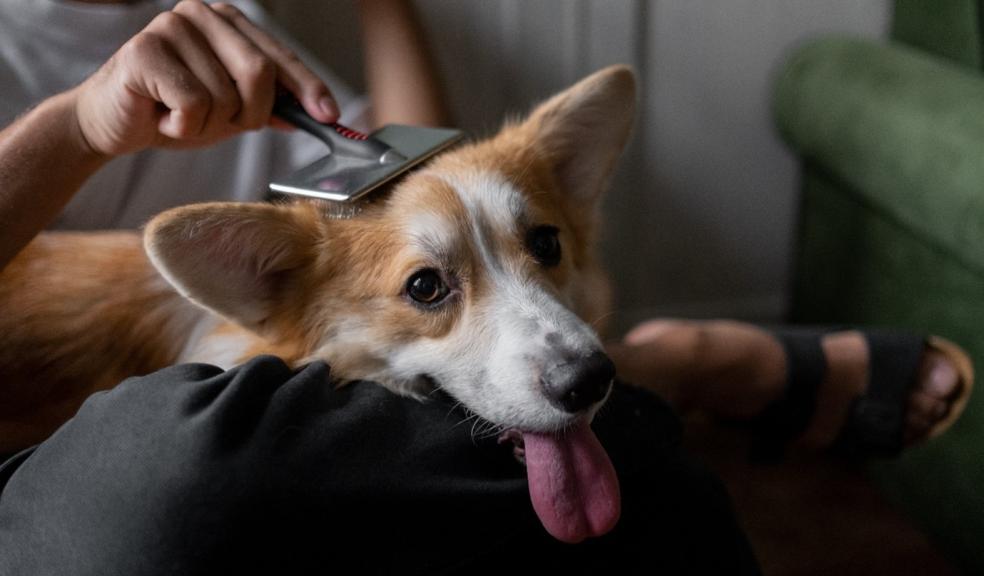
I'm a pet expert- here's how to 'dog-proof' your home
This week brings yellow weather warnings covering northern England for heavy rains and flooding. And with an estimated 11 million pet dogs in the UK, that's a lot of muddy pups!
To offer some advice, Lisa Melvin from Pet Range has shared her expertise:
Any dog owner knows that even one small dog can being a whole lot of mess into the home. And this is especially the case at the moment, thanks to the stormy weather leading to muddy, wet fur. By getting ahead and preparing for the inevitable matted fur and all the shedding, you can keep your home clean and your pet safe and comfortable.
It's always a good idea to start at the source of the mess — your dog! By keeping them clean and grooming them well, you can reduce the amount of dirt they bring to the home. Shedding hair is a common complaint from pet owners this time of year, so make sure to brush your dog regularly to catch this fur before it falls throughout the house. A coat oil can also help by moisturising your dog's skin, as pet's with dry skin can shed even more.
Have a mud cleaning solution at the ready
No matter how well you groom your dog and try to prevent the inevitable, there's always a chance that you'll find mud from your pet somewhere in your house at this time of year. So get prepared by having a go-to mud cleaning solution in your back pocket beforehand.
One of the best ways to deal with mud stains in carpet is to use a vinegar and washing up liquid solution. Add a tablespoon of washing up liquid to a cup of white vinegar and rub the mixture onto the stain gently with a brush. Then simply rinse the stain with cold water using a sponge, and repeat the process until the stain is gone, before drying it with a towel.
You can also use white vinegar to clean painted walls if your messy pup manages to get mud on them. Add around 230ml of white vinegar to a bucket of warm water and very gently dab the stains with a soft sponge until the dirt lifts. Cleaning walls can always be risky however, as you may strip the paint. Before doing so, always test the solution on a small area hidden behind a piece of furniture before committing to the cleaning.
Remove pet hair with lint roller and old socks
While your dog's shedding can be partly tackled by grooming them well, you're still likely to come across excess fur around the house. Most pet owners already have a lint roller for their clothes, and this can be used to pick up fur from furniture too, like sofas, armchairs, and even rugs and carpet.
If you have a pair of old sports socks you were planning on getting rid of, you can give them a new life as they can also be useful for cleaning pet hair. Simply pop them on your hands inside out and wipe over the areas with a lot of pet hair. To make it even more effective, you can slightly dampen the sock to catch more fur. You can also sometimes use an old sports sock directly on your pet if they hate being brushed, although you should still make sure to supplement this with a good brush every once in a while.
Look at the ingredients in your cleaning supplies
As you'll likely find yourself cleaning a lot over the autumn and winter months, it's vital to make sure that the products you're using are safe for pets. Some cleaning solutions contain chemicals which are hazardous for dogs, one of the most commonly found being ammonia. Inhalation of ammonia can irritate your pet's eyes, nose, and throat, and ingesting it can cause severe stomach problems. You can find it often in floor cleaners, surface cleaners, wood cleaners, and glass cleaners, so always make sure to check the label before buying one of these. Fortunately there are now many ammonia-free options of these cleaners available, and some popular brands even have ammonia-free cleaning lines.
Bleach is another damaging substance which can lead to respiratory issues in dogs from inhalation. If ingested the cleaning solution will obviously lead to much worse harm, including vomiting, diarrhoea, and even seizures. If you're looking for an alternative, vinegar is a natural replacement that isn't toxic to dogs, as is baking soda. But on the occasions when only bleach will do, you can use it by diluting it in water and keeping the dog out of the room until the smell of the substance is long gone. When it comes to storing it, make sure it's completely out of reach of your pet in your highest cupboard.







